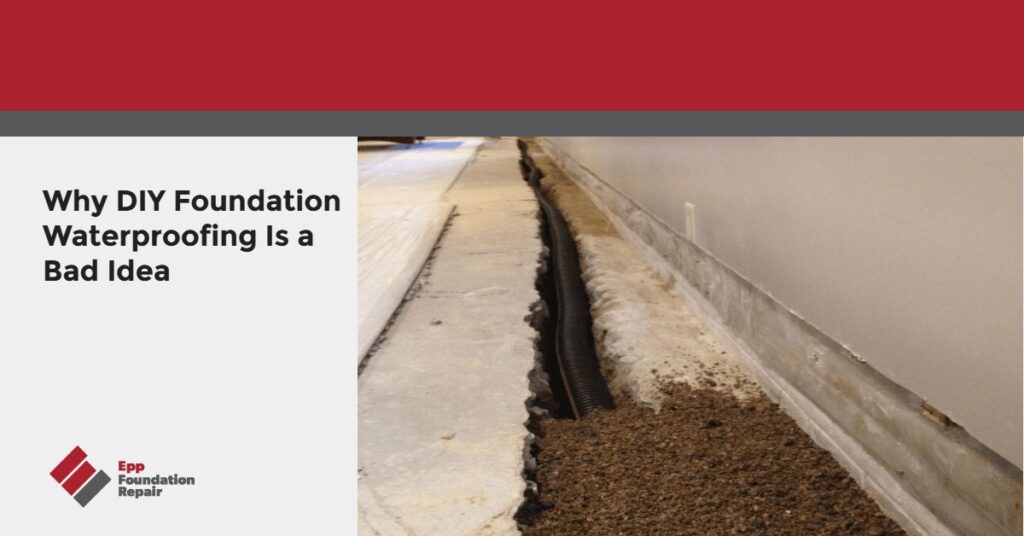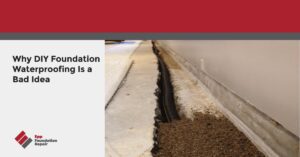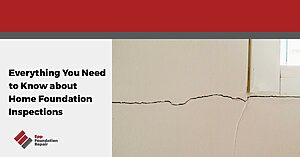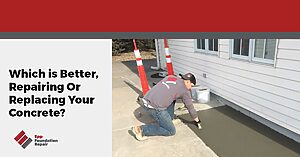We discourage DIY foundation waterproofing because effective waterproofing involves installing a drain tile system, and installing a drain tile system is a major construction project. It’s not a job you’d want to take on as a DIY project unless you have a crew and experience doing this kind of work.
In this article, we’re going to explain why a drain tile system is the best way to waterproof a basement foundation, why installing a drain tile system is a lot of work, and finish up by talking about other ways to keep water out of your basement.
Drain tile is not a DIY foundation waterproofing job
Believe it or not, water – either too much or too little of it – causes most foundation problems. Therefore, getting groundwater under control is essential if you want to reduce the chance of foundation trouble.
While most new homes today come with a drain tile system already installed, older homes often don’t have a drain tile system. However, installing a drain tile system in an existing home is possible. It’s a major construction project, though, and the reason we don’t recommend DIY foundation waterproofing.
A drain tile system is considered a waterproofing gold standard because it doesn’t simply erect a barrier to keep water out. It prevents water from building up in the soil outside your foundation walls. If there’s no excess water in the soil outside your foundation walls, there’s no water to find its way into your basement. Makes sense, no?
There are two varieties of drain tile systems, exterior, and interior. Here’s how each one works:
How an exterior drain tile system works
An exterior drain tile system is installed around the perimeter of the foundation at the level of the footing. Therefore, this will mean excavation down to the footing in an existing house. After that, a shallow trench is dug, lined with gravel, and a perforated pipe is placed in it. The pipe is covered with more gravel, and then the excavated dirt is replaced.
Now, any excess moisture in the soil will find its way into the perforated pipe and be channeled to a sump pit. It will be released away from the foundation via gravity (if yard grading permits) or via an electric sump pump.
How an interior drain tile system works
An interior drain tile system is installed along the inside perimeter of the basement, under the slab. This means tearing up the floor to dig a shallow trench and a sump pit. After the trench is lined with gravel, a perforated pipe is added and covered with more gravel. Finally, the floor is replaced. Now, any excess water in the soil under the foundation will be channeled by your basement drainage system to the sump pit and ejected by the sump pump.
DIY foundation waterproofing is a lot of work if you want to do it right
Installing a drain tile system – either exterior or interior – is a lot of work. Here at Epp Foundation Repair, we use a crew of 2-3 to install a drain tile system.
If you’re installing an exterior drain tile system, you’ll need to first remove any landscaping around the foundation and anything else blocking the area—for example, a fence. You’ll also need to call before you dig to ensure you don’t hit a utility line.
Installing an exterior drain tile system means excavation down to the footer. If you have a basement foundation, that’s a lot of digging for one person. (The foundation wall will need to be cleaned after excavation, as well.) When we do it, we have an entire team involved. Things to consider before installing an exterior drain tile system as a DIY foundation waterproofing project include,
- How long can you dig before you have to stop?
- Will you be able to finish the job before the weather changes?
- You’re going to have a lot of excavated dirt. Where will you put it?
Installing an interior drain tile system involves tearing up the basement floor with a jackhammer. Do you feel comfortable using one?
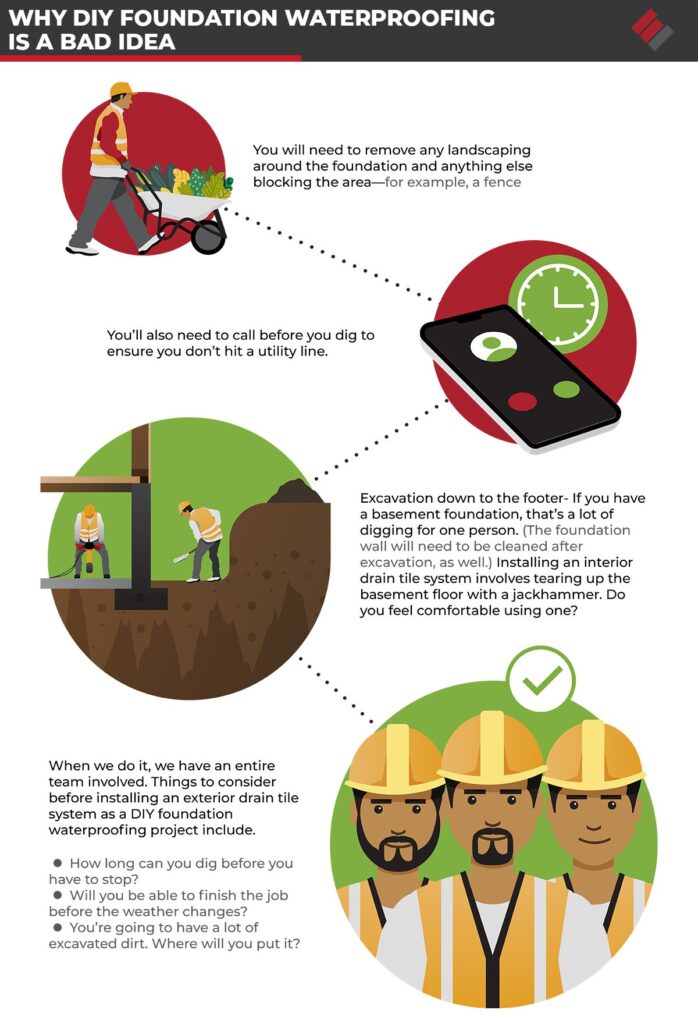
We know hiring a professional to install a drain tile system costs money, and some people think they can save money via DIY foundation waterproofing. The thing is, if it’s not done right, a professional foundation repair contractor will need to come in and fix it. If that happens, you’re out the money and time you spent on the DIY foundation waterproofing job, plus the money you’ll need to pay to the professional. Unless you know what you’re doing and have a crew to help you, we strongly advise against DIY foundation waterproofing.
Other ways to keep water out of your basement
Since wet basements are almost always caused by poor drainage around the foundation, getting groundwater under control is essential. Here are some things you can do:
- Regrade your yard, if necessary – The yard around your home should slope away from the foundation. If it slopes toward your home, water will drain toward the foundation and cause trouble.
- Don’t forget to clean your gutters – Gutters clogged with leaves and other debris are a great way to ensure that water flows over the side of your house and into the soil around the foundation.
- If your downspouts are too short, install extensions – Short downspouts release water next to the foundation, where you don’t want it. Extensions are inexpensive, easy-to-install, and will carry water away from the foundation before releasing it.
- Keep water-hungry vegetation away from the foundation – When you water them, you’ll be adding more water to the soil around the foundation. That’s what you’re trying to avoid.
- Consider installing an underground downspout and bubbler pot – Water flows from the gutters into the underground downspout and toward something called a “bubbler pot’’ located several feet from the foundation. When the bubbler pot is full, it pops up and releases the water.
- If you have window wells, make sure there’s good drainage around them – If water builds up in the window wells, it will get into the basement.
Homeowners considering DIY foundation waterproofing need to realize that not all waterproofing methods are equally effective. The only truly effective waterproofing method is a drain tile system because it prevents water from building up in the soil. All other waterproofing methods are essentially no more than a barrier erected to keep water out. While they might be a temporary fix, they’re not a permanent solution because they don’t address the problem of excess water in the soil outside the foundation walls. Eventually, the water will break through the barrier, and you’ll be back at square one.

